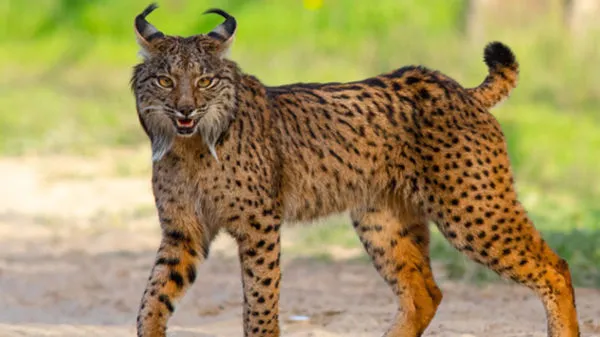The Iberian lynx, once on the verge of extinction, is now making a strong comeback. Today, there are over 2,000 lynxes in the wild across Spain and Portugal. “The Iberian lynx was very, very close to extinction,” says Rodrigo Serra, who runs the lynx reproduction program. At one point, there were fewer than 100 lynxes left, and only 25 were females capable of reproducing.
Reasons for Decline
Several factors contributed to the lynx’s decline. Increased land development, road accidents, and a shortage of food were major issues. In addition, wild rabbits, their primary prey, were decimated by two pandemics, reducing their numbers by 95%. By 2005, Portugal had no lynxes left. However, that year, Spain successfully bred lynxes in captivity. Soon after, Portugal followed with a national plan to save the species.
Efforts to Save the Lynx
Portugal then built a National Breeding Centre in Silves to monitor lynxes 24/7. The goal is twofold: to prepare them for life in the wild and to encourage breeding. Serra explains that the young lynxes are occasionally stressed to help them avoid humans. “A lynx should be a lynx, not be treated like a house cat,” says Serra. Thus, their interactions with humans are minimized.
Strategic Reintroductions
Once ready, lynxes are released into carefully selected areas. This process helps prevent inbreeding and disease. Pedro Sarmento, who has studied the lynx for 30 years, notes their small heads and wide paws. These features, he says, allow them to jump with remarkable agility.
Challenges of Growing Numbers
As the lynx population continues to grow, new challenges arise. For example, some lynxes are released on private land, so agreements with landowners are necessary. While there have been some cases of lynxes attacking chicken coops, Sarmento reassures that such incidents are rare. To mitigate this, they reinforce coops and keep monitoring the lynxes.
Lítio’s Journey
One lynx, Lítio, became famous for his remarkable journey. After being released, he wandered off and ended up in Spain’s Doñana National Park. Eventually, he was treated for illness and released again. This time, he stayed in Portugal, found a mate, and fathered many cubs. “He is the oldest lynx we have here, and he’s fathered plenty of cubs ever since,” says Sarmento.
A Brighter Future
Today, the Iberian lynx is no longer endangered. By 2035, conservationists hope to see 5,000 to 6,000 lynxes in the wild. “I saw the species disappearing. It’s surreal that we’re in a place where we can see lynxes in nature or through camera trapping almost daily,” says Serra. Nevertheless, ongoing threats, such as road accidents, remain a challenge. Despite this, the conservation team is optimistic, and the Iberian lynx is thriving once again.






















